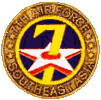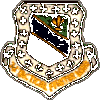|
Reginald Victor Maisey, Jr
Captain
3RD SEC POLICE SQDN, 3RD CBT SPT GROUP, 3RD TAC FTR WING, 7TH AF United States Air Force Sonoma, California November 17, 1934 to January 31, 1968 REGINALD V MAISEY Jr is on the Wall at Panel 36E, Line 23 |
   |

 |
I do not fear an army of lions, if they are led by a lamb.
Captain Reginald Victor Maisey was a lion.
|
Notes from The Virtual WallOne major objective in the Tet Offensive of 1968 was the capture of Saigon. In order to have any chance of attaining this objective, the Communist forces had to neutralize the US and ARVN bases which surrounded the city, particularly the major air bases at Bien Hoa and Tan Son Nhut.Bien Hoa was not protected by Army troops, but by the 3rd Security Police Squadron - a force of about 300 men, without crew-served weapons or organic artillery. However, the base was home to armed aircraft, both helicopters and C-47 gunships. The enemy attack on Bien Hoa began at 3 AM, 31 January 1968, with a preliminary barrage to open the way for an assault force approaching from the eastern side of the base. A concrete blockhouse, manned by the 3rd SPS, was the key blocking fortification and was subjected to the attentions of two infantry battalions and a reinforced infantry company, largely made up of North Vietnamese Army regulars. Captain Maisey was on the western side of the base, about five miles from the blockhouse, when the attack began. As second in command of the 3rd SPS, he proceeded to the blockhouse to direct the defenses in that area. He was able to rally his available forces and withstand near-continuous assaults from three directions. Captain Maisey repeatedly left the relative safety of the blockhouse to direct his troops, maintain radio communications with the base command center, and coordinate support from the air. Although wounded during his excursions, he continued to direct an effective defense. At about 4:30 AM, Captain Maisey was killed by an RPG explosion. Staff Sergeant William Piazza, who earlier had driven a truck-load of ammunition through the attacking forces, took command of the security policemen and continued the defense until Army reinforcements arrived at dawn. The enemy could not neutralize Bien Hoa without capturing Blockhouse 10. Saigon could not be held without neutralizing Bien Hoa. The blockhouse held, Bien Hoa remained operational, and the Tet attack on Saigon failed. Five men are known to have died as a result of the attack:
Captain Reginald V. Maisey received a posthumous Air Force Cross for gallantry in action:
|
| Contact Us | © Copyright 1997-2019 www.VirtualWall.org, Ltd ®(TM) | Last update 08/15/2019. |